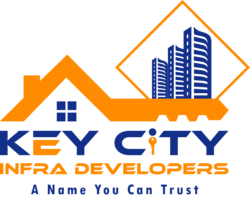Business Development is Just Sales: While sales is a crucial component of business development, it encompasses broader activities aimed at fostering growth and expanding market opportunities. Business development professionals not only focus on closing deals but also on building strategic partnerships, identifying new market segments, and developing long-term growth strategies. This multifaceted approach ensures sustainable business expansion beyond immediate sales transactions.
It’s Only for Large Corporations: Business development strategies are beneficial for businesses of all sizes, including startups and SMEs. Small businesses can leverage business development to establish their market presence, attract investment, and forge strategic alliances with larger companies. Tailoring business development efforts to suit the scale and goals of your business can yield significant growth opportunities regardless of size.
It’s All About Networking Events: While networking events are valuable for making initial connections, effective business development extends beyond casual networking. It involves building and nurturing relationships with key stakeholders over time through consistent communication, demonstrating value, and understanding their specific needs. This strategic relationship-building approach fosters trust and lays the groundwork for successful partnerships and collaborations.
It’s Only Relevant in Certain Industries: Business development principles are adaptable across diverse industries, from technology and finance to healthcare and retail. While the specific tactics may vary based on industry dynamics, the fundamental goal remains consistent: identifying growth opportunities, expanding market reach, and optimizing business performance. Customizing strategies to align with industry-specific trends and challenges enhances the relevance and effectiveness of business development efforts.
It’s Expensive and Resource-Intensive: Effective business development does not necessarily require significant financial resources. It revolves around strategic planning, leveraging existing resources, and prioritizing activities that offer the highest return on investment. Businesses can explore cost-effective tactics such as digital marketing, strategic partnerships, and customer feedback initiatives to drive growth without overspending. By focusing on efficiency and scalability, businesses can achieve sustainable growth within budgetary constraints.
It’s a Quick Fix for Revenue Growth: Business development is a long-term strategy focused on sustainable growth rather than immediate revenue generation. While closing deals and securing new partnerships contribute to revenue growth, the emphasis is on building a robust pipeline of opportunities, cultivating customer relationships, and adapting strategies to evolving market conditions. This patient approach ensures steady growth and resilience against short-term fluctuations in revenue.
It’s Only for External Growth: Business development encompasses both external initiatives, such as entering new markets or forming alliances, and internal improvements aimed at enhancing operational efficiency and fostering innovation. Internal development initiatives, such as talent development programs or process optimization, strengthen organizational capabilities and support external growth strategies. Integrating internal and external development efforts maximizes overall business growth and sustainability.

It’s Only for Business-to-Business (B2B) Companies: While business development is commonly associated with B2B companies, business-to-consumer (B2C) companies can also benefit significantly. B2C businesses can use business development strategies to expand distribution channels, enhance brand loyalty through strategic partnerships, and differentiate their offerings in competitive markets. By understanding consumer behavior and market trends, B2C companies can optimize their growth potential and drive long-term success.
It’s Separate from Marketing: Business development and marketing are interdependent functions that work in tandem to achieve overarching business goals. Marketing efforts generate awareness and attract leads, while business development focuses on converting leads into customers and nurturing long-term relationships. Aligning business development strategies with marketing initiatives ensures a cohesive approach to driving growth, maximizing market opportunities, and maintaining brand consistency across all customer touchpoints.
It’s Only Relevant for New Business Ventures: Established businesses can benefit from business development by diversifying revenue streams, entering new geographic markets, or introducing innovative product lines. Business development strategies help established companies adapt to industry changes, capitalize on emerging trends, and maintain competitive advantage. By continuously evolving and expanding their market presence, established businesses can sustain growth and navigate market uncertainties effectively.
It’s a Role Reserved for Specialists: While business development professionals specialize in strategic growth initiatives, every member of an organization plays a role in business development. Employees across departments can contribute valuable insights, identify growth opportunities, and nurture client relationships. Fostering a culture of collaboration and innovation empowers employees to contribute to business development efforts, driving collective growth and fostering a dynamic organizational culture.
It’s Limited to External Factors: Effective business development encompasses both external factors, such as market trends and competitor analysis, and internal factors, including organizational culture and operational efficiency. Addressing internal factors enhances organizational readiness to capitalize on external opportunities and navigate industry challenges effectively. By optimizing internal processes and fostering a supportive work environment, businesses can strengthen their competitive position and achieve sustainable growth.
It’s Only About Closing Deals: While closing deals is a critical aspect of business development, it’s equally important to prioritize building and maintaining long-term relationships with clients and partners. Business development professionals focus on understanding client needs, delivering value-added solutions, and providing ongoing support to foster client loyalty and repeat business. By emphasizing relationship-building alongside transactional success, businesses cultivate sustainable growth and enhance their reputation within the market.
It’s a One-Time Effort: Business development is an ongoing process that requires continuous evaluation, adaptation, and improvement. Markets evolve, customer expectations change, and new opportunities arise over time. Regularly reviewing business development strategies, analyzing performance metrics, and adjusting tactics ensures alignment with business goals and market dynamics. By embracing a proactive approach to business development, businesses can maintain agility, capitalize on emerging opportunities, and sustain long-term growth.





